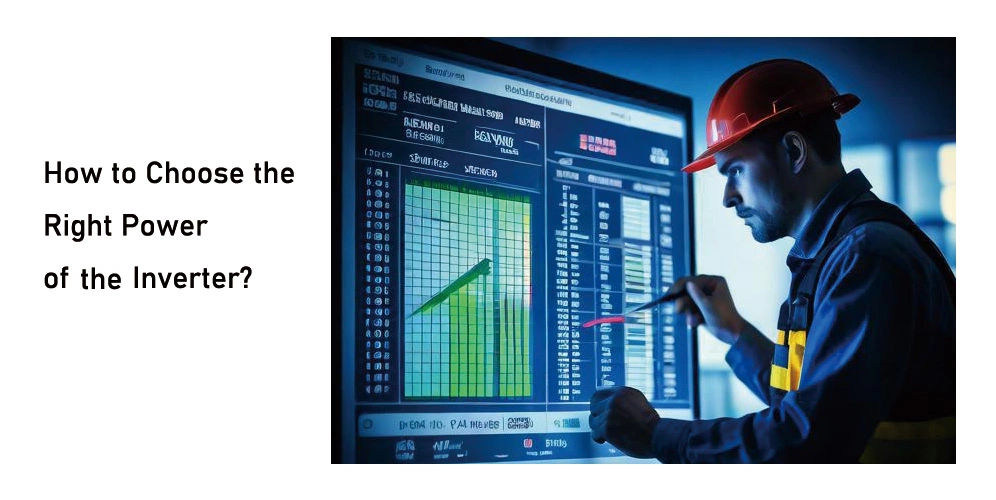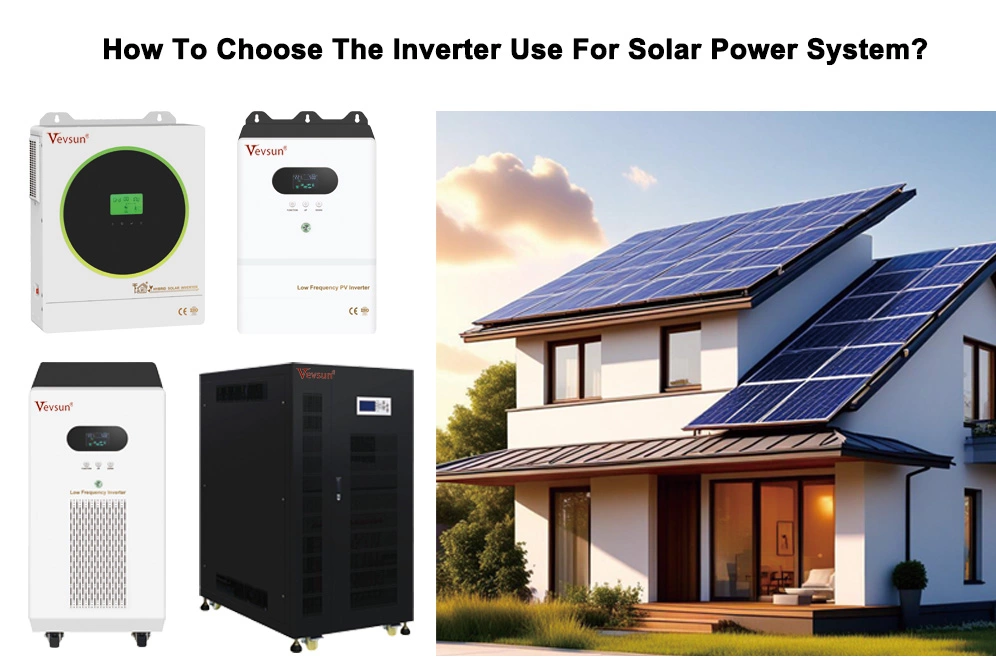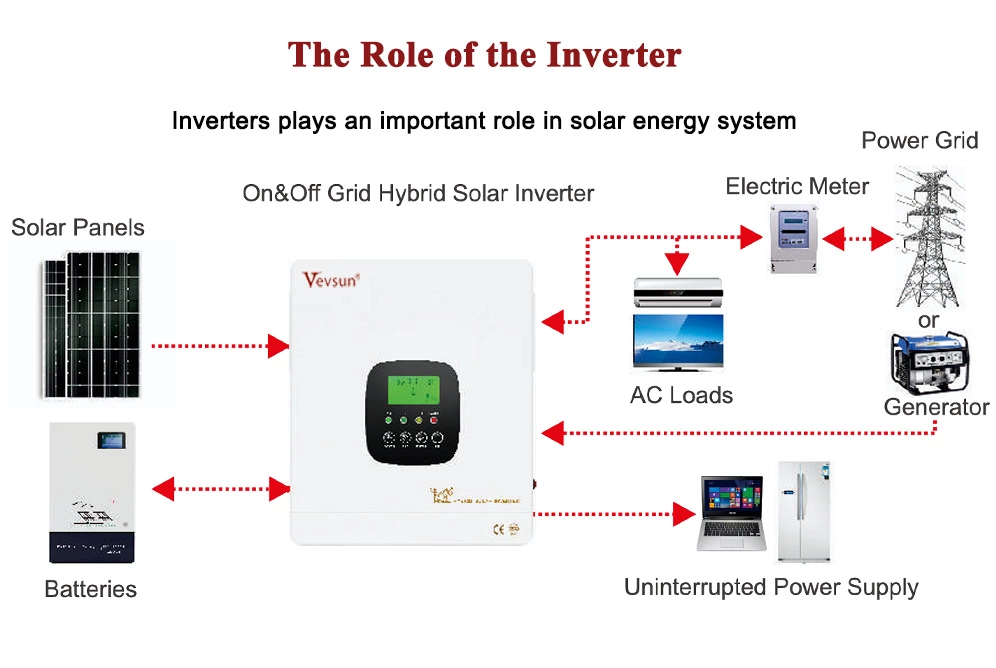The Ultimate Guide to Choosing the Right PV Inverter.
 Jul 08,2025
Jul 08,2025

 Vevsun
Vevsun
Introduction
As global energy demands shift toward renewable sources, solar power has emerged as a leading solution for both residential and commercial applications. At the heart of every efficient solar energy system lies a crucial component—the photovoltaic (PV) inverter. With numerous options available on the market, selecting the right PV inverter can be overwhelming. This comprehensive guide will explore the functions, types, applications, and key considerations of PV inverters to help you make an informed decision. Whether you're a homeowner seeking to cut energy costs or a business striving for sustainability, understanding PV inverters is essential for optimizing your solar power system’s performance.
Table of Contents
1. What Is a PV Inverter?
2. Why Are PV Inverters Essential?
3. How Do PV Inverters Function?
4. Different Types of PV Inverters
5. Choose of the PV Inverter
6. Vevsun PV Inverter Solution
1. What Is a PV Inverter?
A PV inverter, or photovoltaic inverter, is a fundamental component in solar energy systems. Its primary role is to convert the direct current (DC) electricity produced by solar panels into alternating current (AC), which powers most household and industrial appliances. Without an inverter, the energy generated by solar panels would be incompatible with standard electrical systems.
Modern PV inverters go beyond basic conversion. Many incorporate Maximum Power Point Tracking (MPPT) technology, which optimizes power output by adjusting voltage and current in real time. Additionally, advanced models feature remote monitoring, enabling users to track system performance via mobile apps or online platforms. These innovations enhance efficiency, reliability, and return on investment (ROI) for solar installations.
2. Why Are PV Inverters Essential?
DC to AC Conversion
Solar panels generate DC electricity, but most appliances and electrical grids operate on AC. The PV inverter bridges this gap, ensuring seamless energy usability.
Maximizing Efficiency
High-quality inverters minimize energy loss during conversion. Technologies like MPPT adjust to environmental factors (e.g., shading, temperature) to extract maximum power from panels.
System Monitoring & Smart Features
Many inverters now offer real-time performance tracking, fault detection, and energy usage analytics. These features empower users to optimize consumption and detect issues early.
At Vevsun, our PV inverters combine cutting-edge technology with robust design, making them ideal for residential and commercial setups.
3. How Do PV Inverters Function?
PV inverters follow a multi-step process:
DC Input Reception – The inverter collects variable DC electricity from solar panels.
MPPT Optimization – Adjusts voltage/current to maximize power extraction under changing conditions.
Inversion to AC – High-frequency switching converts DC into stable AC output.
Grid Synchronization – In grid-tied systems, the inverter aligns phase and frequency with the utility grid for safe integration.
Monitoring & Safety – Advanced inverters include diagnostics, surge protection, and shutdown mechanisms.
This process ensures efficient, reliable energy conversion while enhancing system longevity.
The role of the inverter
The role of the inverter in the home energy storage system is not limited to current conversion, but also undertakes the following important functions:
Power dispatching: It can adjust the power output according to the demand for household electricity consumption to ensure that household appliances obtain stable current.
Safety protection: Inverters are usually equipped with safety functions such as overload protection and short circuit protection to protect the energy storage system and electrical equipment from damage.
Intelligent monitoring: Real-time monitoring of power generation, power consumption, battery status and other data, users can view the charging and discharging status of the energy storage battery
4. Types of inverters
According to the working mode, they are divided into:
Grid-connected: connected to the public power grid, excess power can be fed into the grid
Off-grid: independent operation, not dependent on the grid, suitable for areas without grid
Hybrid: has both grid-connected and off-grid functions, and can automatically switch when the grid is out of power
According to the waveform, they are divided into:
Pure sine wave: the output waveform is consistent with the grid and compatible with all electrical appliances
Modified sine wave: the output is close to a sine wave, the cost is low but it may affect sensitive equipment
Square wave: simple structure but poor compatibility, has been gradually eliminated
According to the system structure, they are divided into:
Centralized: suitable for larger systems, all photovoltaic modules are connected to a single inverter
String type: each string of photovoltaic modules is connected to an independent inverter, with high flexibility
Micro: each photovoltaic panel is equipped with an independent inverter to maximize power generation efficiency
5. Selection of inverters

As the monitoring center in the energy storage system, the inverter needs to consider multiple aspects when selecting it to achieve safe, efficient and economical home energy management.
Power matching:
Select appropriate power according to the maximum household power load and energy storage system capacity, and consider the peak power demand to ensure that the inverter can withstand short-term high load. It is recommended to retain 20-30% of the power margin to cope with future power consumption growth. For example, if the household peak power consumption is 5kW, it is recommended to choose an inverter ≥6kW. Pay attention to the short-term overload capacity of the inverter (such as 110%~150% rated power for 10 seconds) to cope with instantaneous high loads such as motor starting.
Phase selection:
Single-phase inverters are suitable for most ordinary households, and the load power is usually ≤10kW (such as air conditioners, refrigerators, lighting and other conventional appliances). The advantages are low cost, simple installation and easy maintenance.
Three-phase inverters are suitable for large apartments, villas or commercial scenarios, with load power >10kW, or with three-phase motor equipment (such as elevators, large water pumps, industrial equipment). The advantage is to balance the grid load and support the stable operation of high-power equipment.
6. Vevsun PV Inverter Solution
We design and match different solar system solutions for different users. We can provide solar solutions based on the power consumption, load type and specific needs provided by customers, and we can also match different inverters according to the customer's existing solar energy system. Such as home solar energy system, commercial solar energy system, industrial solar energy system, farm solar energy system, RV solar energy system, solar air conditioning system, solar water pump system, outdoor solar power supply, etc. We can also provide OEM&ODM services according to customer needs, and products can be customized.
Conclusion
Selecting the right PV inverter is critical for maximizing solar energy benefits. By understanding types, features, and applications, you can make an informed choice tailored to your needs. Whether you opt for a string, micro, hybrid, or central inverter, prioritize efficiency, durability, and smart functionality.
For reliable, high-performance inverters, explore Vevsun's PV inverter solutions today and take the next step toward sustainable energy independence.

 Home
Home

 What's is the Components for an Off Grid Solar System?
What's is the Components for an Off Grid Solar System?  You May Also Like
You May Also Like

 Tel
Tel
 Email
Email
 Address
Address











